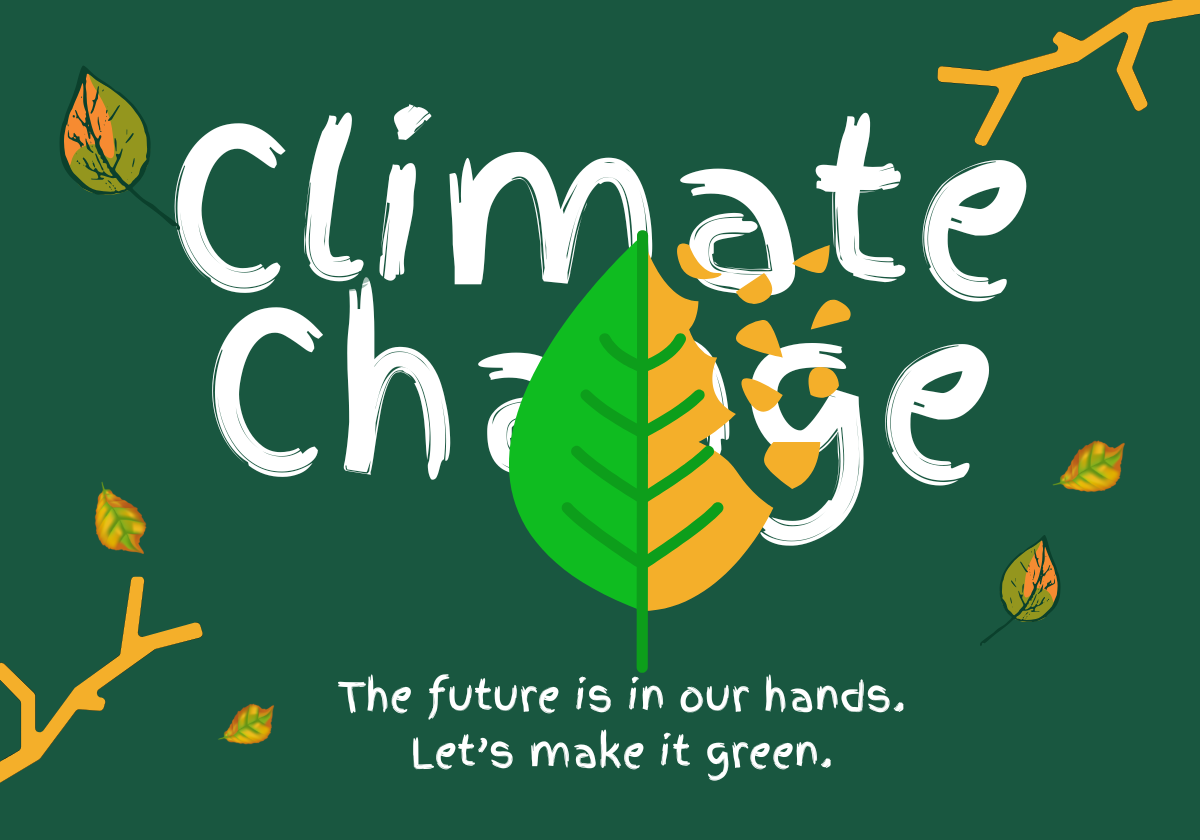Climate change is an enduring change in temperature, precipitation, and other environmental factors globally.~ While these changes took place throughout hundreds of years, the major transforming factors that are taking place today are associated with the actions of humans. Fulfilling the requirements of understanding climate change entails knowing the causes, impacts, and possible measures aimed towards averting it to limit the consequences that the world and people will face.
Primary causes of climate change
Climate warming has primarily been caused by the concentration of GHGs or Green House Gases in the atmosphere. These gases trap heat, creating a “greenhouse effect” which raises temperatures around the globe. These changes have been majorly contributed by the rising industrial activities of humans which include:
1. Burning of fossil fuels
Fossil fuels such as oil, coal, and natural gas are burned for energy and transportation. These generate electric energy which in turn is used on cars and planes. As a result of this process, large amounts of carbon dioxide (CO2) are emitted which heavily affects climate change.
2. Deforestation
Cutting down trees for agricultural purposes and urbanization reduces CO2 absorption which negatively affects the atmosphere since forests are one of the biggest carbon sinks.
3. Industrial Activities
The production of numerous items at factories gives off copious amounts of GHG such as nitrous oxide and methane from the chemical processes of production.
4. Agriculture
The raising of livestock emits methane, which is a highly concentrated greenhouse gas. Similarly, the application of fertilizers also aids in the production of nitrous oxide.
5. Waste Management
Landfills that contain organic waste produce methane gas, while other forms of waste disposal practices lead to pollution of the environment.
Effects of Climate Change
Climate change affects living organisms, global climatic conditions, and human societies more than any other phenomena in history.
1. Rising Temperatures
Due to global warming, there is an augmented temperature around the globe which results in temperature spikes along with altered seasonal climatic conditions.
2. Melting Ice and Rising Sea Levels
The rapid reduction of polar ice caps and glaciers leads to an increased global sea level. This puts coastal regions and islands at risk of severe flooding and erosion.
3. Extreme Weather Events
Severe weather conditions such as hurricanes, droughts, floods, and forest fires have increased due to global warming. The aftermath of these events leads to loss of life and destruction on a massive scale.
4. Impact on Biodiversity
A number of species are facing increased rates of extinction or are at risk of losing their natural habitat due to climate change and its environmental impacts.
5. Threats to Food Security
Global food production is at risk due to the shift in the range of temperatures and rainfall, which invariably disturbs the farming cycle.
6. Health Risks
Increasing air temperatures and shifting climate conditions amplify the prevalence of various diseases, as well as the occurrence of heat-related ailments and respiratory issues due to poor air quality.
Solutions to Climate Change
Combating climate change requires a collaborative approach from all governments, businesses, as well as individuals. The most proactive solutions include:
1. Transition to Renewable Energy
The use and production of clean energy such as solar, wind, and hydroelectric power have the potential of minimizing GHG emissions to a great extent.
2. Energy Efficiency
Investing in energy-efficient appliances and practices helps decrease energy consumption while simultaneously cutting down on emissions.
3. Afforestation and Reforestation
Increasing the planting of trees, along with the preservation of existing forests contributes immensely to enhancing biodiversity, and absorbing CO2.
4. Sustainable Agriculture
Emphasizing organic farming, as well as decreasing the use of fertilizers and unsustainable agricultural land management practices can reduce emissions from food production.
5. Waste Management
There is a need to reduce waste such as plastic and paper. Where possible, waste should be properly recycled or composted which minimizes the production of methane from landfills.
6. Policy and Legislation
Governments need to work towards formulating policies and laws that restrict GHG emission levels, encourage increased use of renewable energy, and ensure that natural resources are not overexploited.
7. International Cooperation
International agreements such as the Paris Agreement are necessary to ensure a unified approach in carrying out activities to control climate change.
How Individuals Can Help
Everyone can take simple but effective steps to help tackle climate change:
- Curtail Energy Usage: Utilize energy-saving devices and switch off lights and appliances when not in use.
- Use Eco-Friendly Modes of Travel: Journey by foot or bike, take public transportation, or drive an electric car.
- Lower Meat Consumption: A switch to a plant-based diet would decrease farming emissions.
- Reduce Trash: Divert from landfills by recycling, reusing, and composting.
- Back Policies to Protect the Climate: Support government policies that address the impacts of climate change.
The Role of Technology and Innovation
Innovative technologies will assist in addressing climate change. Carbon capture and storage (CCS) technologies will mitigate industrial emissions economic cap. Smart grids, energy storage systems, data analytics and AI will improve efficiency and enable resource management and climate pattern forecasting.
The Role of Education and Awareness
Educating people and communities about the dangers and effects of climate change will allow them to take action. Schools play a key role in ensuring future generations are environmentally conscious. Information campaigns and mass media can fill gaps and promote changes in society’s behaviour towards the environment.
A Call to Action
Mitigating the consequences of global warming requires immediate and continual effort in every aspect of life. Along with advances in technology and policy changes, individual actions are equally effective at facilitating change. Collectively, by making conscious consumer decisions, supporting sustainability, and endorsing international initiatives, it is possible to resolve the issue of climate change and build a healthier future.
Collectively, we can work to preserve our planet so it can continue to flourish long into the future. Combating climate change is an inescapable charge but also a chance to harness creativity, diversity, and openness in dealing with environmental issues.

